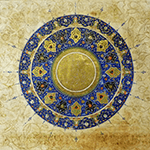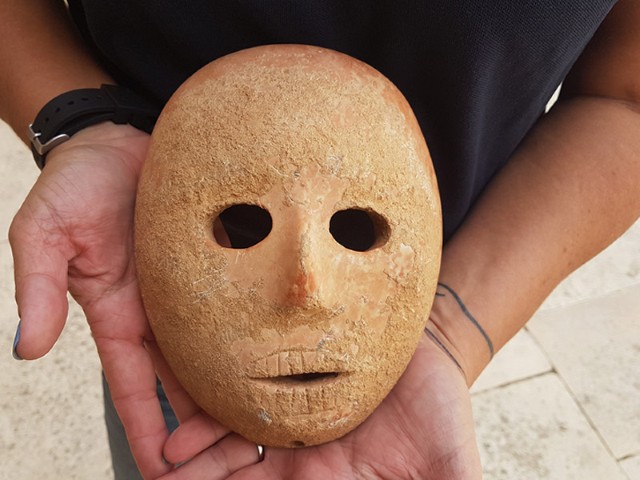In his blog Bill Carraher, incoming editor of the Annual of ASOR, is beginning to reflect on the past and future of the Annual. As a part of that, he has assembled links to open access (and some less open access) copies of the Annual. I am repeating his list here:
The first 20-some volumes of AASOR are available for free download various places (with some obviously in the public domain):The annual of the American Schools of Oriental Research 1919/1920, vol. 1 (jstor, Hathi Trust, Google books).
The annual of the American Schools of Oriental Research 1921/1922, vol 2/3 (jstor)
The annual of the American Schools of Oriental Research 1922/1923, vol. 4 (jstor, Hathi Trust, Archive.org)
The annual of the American Schools of Oriental Research 1923/1924, vol. 5 (Hathi Trust, Archive.org)
The annual of the American Schools of Oriental Research 1924/1925, vol. 6 (Hathi Trust)
The annual of the American Schools of Oriental Research 1925/1926, vol. 7 (Hathi Trust)
The annual of the American Schools of Oriental Research 1926/1927, vol. 8 (Hathi Trust, Archive.org)
The annual of the American Schools of Oriental Research 1927/1928, vol. 9 (Hathi Trust, Archive.org)
The annual of the American Schools of Oriental Research 1927/1928, vol. 10 (Hathi Trust, Archive.org)
The annual of the American Schools of Oriental Research 1929/1930, vol. 11 (Hathi Trust, Archive.org)
The annual of the American Schools of Oriental Research 1930/1931, vol. 12 (Hathi Trust, Archive.org)
The annual of the American Schools of Oriental Research 1931/1932, vol. 13 (Archive.org)
The annual of the American Schools of Oriental Research 1933/1934, vol. 14 (Archive.org)
The annual of the American Schools of Oriental Research 1934/1935, vol. 15 (Hathi Trust, Archive.org)
The annual of the American Schools of Oriental Research 1935/1936, vol. 16 (Hathi Trust, Archive.org)
The annual of the American Schools of Oriental Research 1936/1937, vol. 17 (Hathi Trust, Archive.org)
Explorations in Eastern Palestine, III, vol. 18/19 (Hathi Trust, Archive.org)
Introduction to Hurrian, vol. 20 (Hathi Trust)
The Excavation of Tell Beit Mirsim. Vol. III: The Iron Age 1941 – 1943, vol. 21/22 (Not Available)
The annual of the American Schools of Oriental Research 1943/1944, vol. 23 (Hathi Trust)
The annual of the American Schools of Oriental Research 1944/1945, vol. 24 (Hathi Trust)After volume 24, things get a bit more irregular, with the exception of volume 32/33:The excavation at Herodian Jericho, 1951, vol. 32/33 (Hathi Trust)Things get better again, however, after volume 55:Preliminary excavation reports and other archaeological investigations : Tell Qarqur, Iron I sites in the North-Central highlands of Palestine, vol. 56 (Hathi Trust)
Across the Anatolian plateau : readings in the archaeology of ancient Turkey, vol. 57 (Not Available)
The Near East in the southwest : essays in honor of William G. Dever, vol. 58 (Hathi Trust)
Results of the 2001 Kerak Plateau Early Bronze Age survey AND Two early alphabetic inscriptions from the Wadi el-Ḥôl: new evidence for the origin of the alphabet from the western desert of Egypt, vol. 59 (Hathi Trust)
The archaeology of difference : gender, ethnicity, class and the “other” in antiquity : studies in honor of Eric M. Meyers, vol. 60/61 (Hathi Trust)
The middle Bronze Age IIA cemetery at Gesher : final report, vol. 62 (Hathi Trust)
Views from Phlamoudhi, Cyprus, vol. 63 (Hathi Trust)The three most recent volumes (64, 65, and 68) are only available via Jstor with a subscription. All in all, 27 of the 66 published volumes are available for free download (and a few more can be viewed at Hathi Trust, but not downloaded). This is something that should be easy enough to sort out and it would be outstanding to try to get all 66 volumes of AASOR available for free download by 2020 (or at least those still not generating some income for ASOR).
AWOL's Alphabetical List of Open Access Monograph Series in Ancient Studies



 JERUSALEM, ISRAEL—According to an
JERUSALEM, ISRAEL—According to an  EDINBURGH, SCOTLAND—Paleolithic cave art in Turkey, Spain, France, and Germany, may represent star constellations, according to a
EDINBURGH, SCOTLAND—Paleolithic cave art in Turkey, Spain, France, and Germany, may represent star constellations, according to a 












